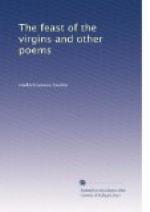[Illustration: LITTLE CROW. From an original photograph in the author’s possession]
Little Crow’s sixteen-year-old son, Wa-wi-na-pe—(One who appears —like the spirit of his forefather) was with him at the time he was killed; but escaped, and after much hardship and suffering, was at last captured at Mini Wakan (Devil’s Lake, in North Dakota). From him personally I obtained much information in regard to Little Crow’s participation in the “Sioux War,” and minutely the speech that Little Crow made to his braves when he finally consented to lead them on the war-path against the whites. A literal translation of that speech will be found further on in this note.
I knew Ta-o-ya-te-du-ta, and from his own lips, in 1859-60 and 61, obtained much interesting information in regard to the history, tradition, customs, superstitions and habits of the Dakotas, of whom he was the recognized Head-Chief. He was a remarkable Indian—a philosopher and a brave and generous man. “Untutored savage” that he was, he was a prince among his own people, and the peer in natural ability of the ablest white men in the Northwest in his time. He had largely adopted the dress and habits of civilized man, and he urged his people to abandon their savage ways, build houses, cultivate fields, and learn to live like the white people. He clearly forsaw the ultimate extinction of his people as a distinct race. He well knew and realized the numbers and power of the whites then rapidly taking possession of the hunting-grounds of the Dakotas, and the folly of armed opposition on the part of his people. He said to me once: “No more Dakotas by and by; Indians all white men. No more buffaloes by and by; all cows, all oxen.” But his braves were restless. They smarted under years of wrong and robbery, to which, indeed, the most stinging insults were often added by the traders and officials among them. If the true, unvarnished history of the cause and inception of the “Sioux Outbreak” in Minnesota is ever written and published, it will bring the blush of shame to the cheeks of every honest man who reads it.
Against his judgment and repeated protests, Little Crow was at last, after the depredations had begun, forced into the war on the whites by his hot-headed and uncontrollable “young men.”
Goaded to desperation, a party of Little Crow’s young “bucks,” in August, 1862, began their depredations and spilled white blood at Acton. Returning to their chief’s camp near the agency, they told their fellow braves what they had done. The hot-headed young warriors immediately demanded of Little Crow that he put on the “war-paint” and lead them against the white men. The chief severely rebuked the “young men” who had committed the murders, blackened his face (a sign of mourning), retired to his teepee and covered his head in sorrow.




